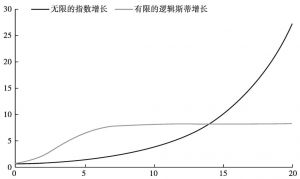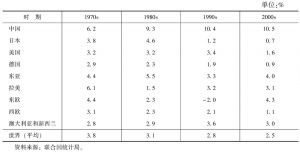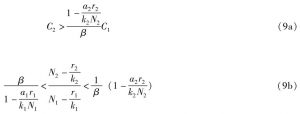论文
代谢增长论:市场份额竞争、学习不确定性和技术小波
摘要
新古典经济学的内生和外生增长理论都忽略了资源限制和技术发展的波样运动。人口动态学的逻辑斯蒂增长模型和物种竞争模型,能够提供一个演化分析框架,讨论市场份额竞争中技术小波所推进的经济增长。新古典经济学的干中学和知识积累模型忽略了技术进步的质变和间断性。知识的新陈代谢过程才能理解创造性毁灭。政策和制度在技术周期的不同阶段是共生演化过程(Co-evolution)。劳动分工受市场范围、资源种类和环境波动的限制。在生态-工业系统的稳定性与复杂性之间存在鱼和熊掌不可兼得的消长关系(Trade-off)。面对学习不确定性时,发展策略的多样性源于文化和环境的影响。西方的分工模式以劳动节约和资源密集型技术为特征,而亚洲和中国的分工模式以资源节约和劳动密集型为特征。非线性人口动态学整合了斯密、马尔萨斯和熊彼特的思想,为经济增长和技术发展提供了一个统一的演化理论。
作者
陈平 ,中山大学岭南学院教授、博士生导师,中山大学粤港澳发展研究院教授,中山大学海洋经济研究中心主任。
检索正文关键字
论文目录
- 一 引言
- 二 非平稳经济增长和新古典增长理论的局限
-
三 有限增长的逻辑斯蒂模型和物种竞争模型
- (一)经济动态学的有限和无限增长
- (二)开放经济的市场份额竞争模型
- (三)技术生命周期、逻辑斯蒂小波和代谢增长
- (四)逻辑斯蒂小波四阶段中资本和制度在混合经济下的共生演化(Co-Evolution)
-
四 学习策略中的风险偏好与文化多样性
- (一)模仿学习(Learning by Imitating)和试错学习(Learning by Trying):风险规避和风险追求的文化
- (二)节约资源和消耗资源的文化
- (三)市场规模、资源多样性,以及规模经济和范围经济
- (四)环境涨落的影响
- (五)稳定性与多样性之间的消长(Trade-off)关系和一般斯密定理
- (六)个人主义与集体主义的竞争格局和熊彼特创造性毁灭的动态图景
-
五 方法论和哲学问题
- (一)实体经济和货币经济
- (二)均衡和非均衡的经济机制
- (三)线性和非线性的思维方式
- (四)理论模型与计算机模拟
- 六 结论
- 致谢
相关文献
马克思主义再生产理论的数学分析(一)为什么不断实现扩大再生产必须优先发展生产资料的生产
马克思主义再生产理论的数学分析(三)在实现扩大再生产时第一部类和第二部类所必须满足的上升比例关系,以及它们的经济意义的分析
查看更多>>>


















